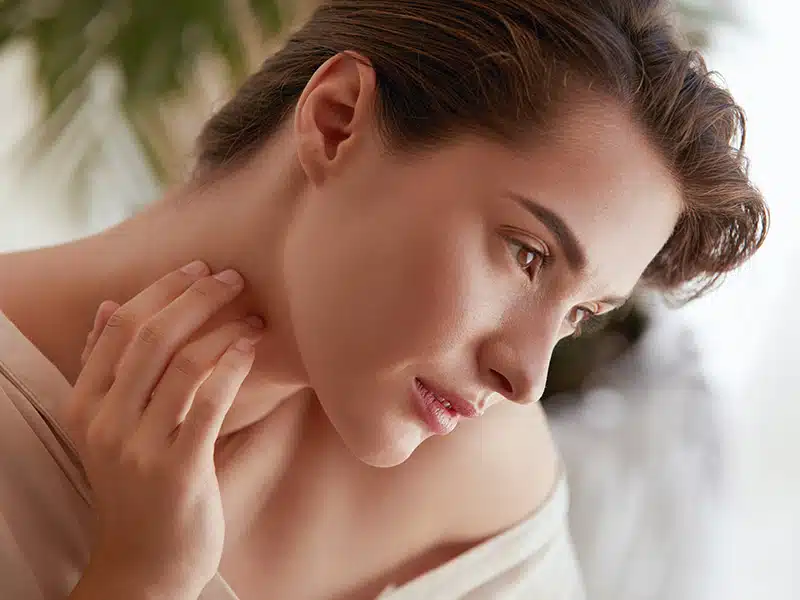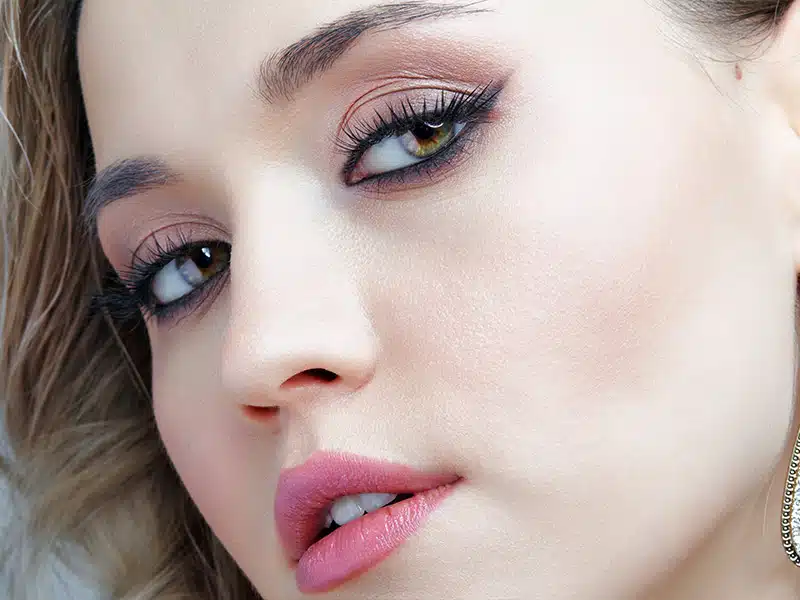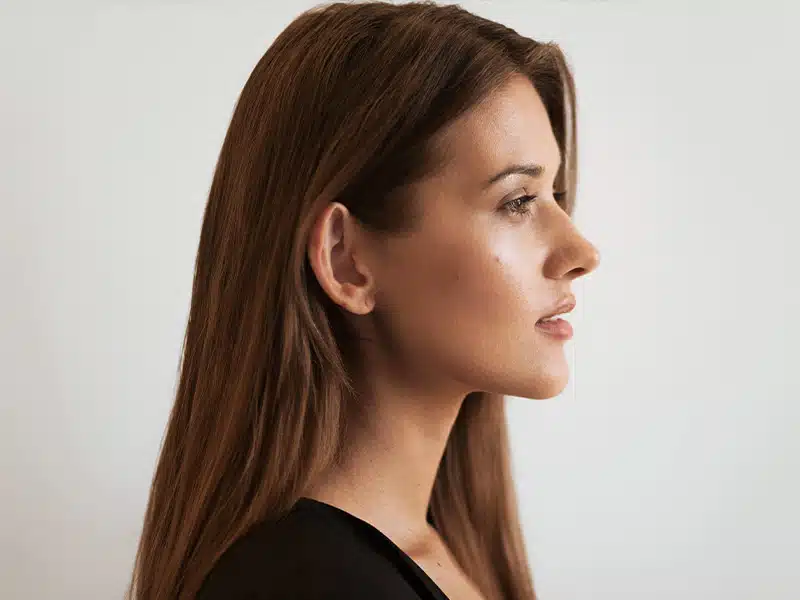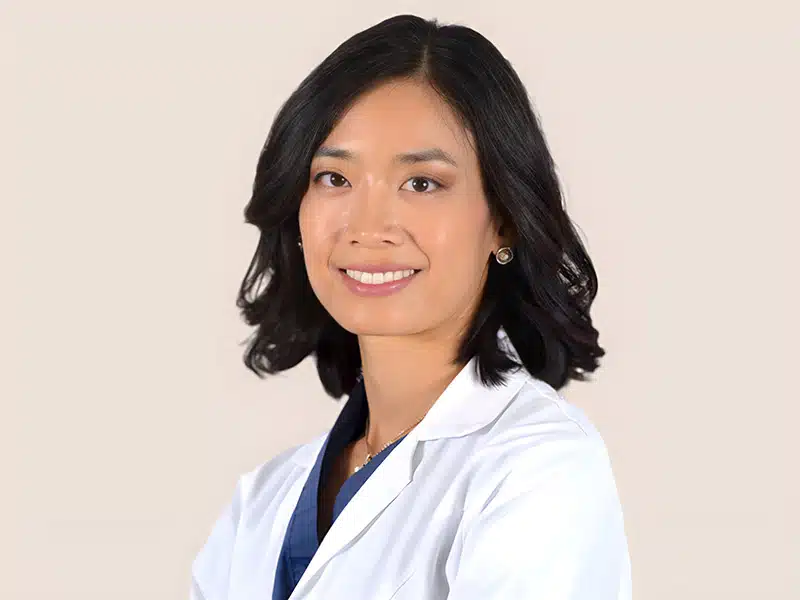Rhinoplasty
New Jersey & Philadelphia
Home » Procedures » Rhinoplasty
The nose is one of the most eye-catching features of someone’s face. The shape, size, and contour of the nose can significantly impact the appearance of other features of the face. A nose can disrupt facial harmony when it appears too large or small, too narrow or wide, or too upturned or droopy. The structure of the nose can also cause functional issues such as nasal blockage, sleep disturbance, and snoring.
Dr. Alisa Yamasaki, MD, is an experienced, double board-certified surgeon who sees patients in New Jersey & Pennsylvania. Her expertise is in facial plastic surgery, including both functional and cosmetic rhinoplasty.
Experience the Excellence of Dr. Yamasaki, Harvard-Trained Facial Plastic Surgeon.

What Is a Rhinoplasty?
Rhinoplasty–commonly referred to as a “nose job”–is the surgical reshaping of the nose. Rhinoplasty can be done cosmetically to enhance the features of the nose and help rebalance the appearance of the face. Rhinoplasty can also be performed to correct nasal blockage caused by a deviated nasal septum, nasal valve collapse, and/or other structural problems of the nose.
The Benefits of Rhinoplasty
Rhinoplasty has many potential benefits:
01
Alleviates nasal blockage
Experience clearer breathing and relief from chronic congestion, improving your overall quality of life.
02
Corrects a broken or crooked nose
Restore symmetry and functionality to your nose, boosting both facial appearance and confidence.
03
Enhances facial harmony and balance
04
Improves sleep
The Primary Rhinoplasty Consultation
During a consultation with Dr. Yamasaki, patients share their cosmetic concerns and goals for surgery. Dr. Yamasaki will evaluate the patient’s nasal structure and other facial features to determine the best treatment options for you.
The consultation ensures that both the patient and Dr. Yamasaki are aligned regarding the patient’s goals and reasons for proceeding with surgery. This helps to formulate a surgical plan and set realistic expectations for the surgical result.

You won't regret
booking Dr. Yamasaki
“Dr. Yamasaki is incredible. She’s a physician that genuinely cares about her patients. From the moment she stepped in to the room, she was extremely diligent, comforting, and never made me feel rushed. She explained everything in great detail and went above and beyond in our appointment. It was refreshing to be seen by a physician that genuinely cares and is sympathetic to patient issues. If you’re thinking about seeing Dr. Yamasaki or interested in seeing her, don’t think twice. Book an appointment. You won’t regret it.”
The Ideal Candidate for Nose Surgery
Like most cosmetic surgeries, rhinoplasty surgery is ideal for adult nonsmokers with good overall health.
Dr. Yamasaki recommends that rhinoplasty patients stop medications or supplements that might increase the risk of bleeding unless there is a medical necessity to continue these medications. In this case, Dr. Yamasaki will work with the patient to determine the best perioperative plan.

The Rhinoplasty Procedure
Dr. Yamasaki customizes each nasal surgery to fit the facial features and needs of each individual patient. Whether the patient is seeking cosmetic rhinoplasty or functional nasal surgery, Dr. Yamasaki treats each patient with the utmost care and professionalism.
Anesthesia
Rhinoplasty is typically an outpatient procedure performed under general anesthesia.
Types of Rhinoplasty
Open Rhinoplasty
In an open rhinoplasty, a small incision is made just under the nasal tip. This procedure gives the plastic surgeon greater access to the nasal structures and more flexibility to sculpt the nose into the desired shape.
Closed Rhinoplasty
Closed rhinoplasty is a technique where incisions are hidden inside the nose and within the nostrils. Since the procedure is less invasive, closed rhinoplasty often has a shorter recovery period with less swelling. This technique can be used very effectively in specific cases but may not always provide the plastic surgeon with adequate access to the nasal structures.
Revision Rhinoplasty
Revision rhinoplasty is a surgery performed to correct deformities or nasal symptoms in patients who have undergone a previous nose surgery . Revision rhinoplasty is usually a more difficult procedure with higher risks because of scarring and altered anatomy from prior surgery. It often requires an additional cartilage grafting source and also involves additional risks compared to other types of rhinoplasty.
Nonsurgical Rhinoplasty
Nonsurgical rhinoplasty (“liquid rhinoplasty”) is a procedure that uses dermal fillers to reshape the nose without the need for surgery or incisions. This is done in the rhinoplasty office with no downtime or recovery. The amazing results of this procedure can last up to 1-2 years.
During the procedure, Dr. Yamasaki injects dermal filler into specific areas of the nose. This reduces the appearance of a dorsal bump, reshapes the nasal tip, improves symmetry, or smoothens out irregularities.
Functional Rhinoplasty
Functional rhinoplasty is performed to address structural issues that impair breathing, such as a deviated septum, nasal valve collapse, or enlarged turbinates. While it focuses on improving nasal function, it may also involve subtle aesthetic adjustments. This procedure often combines techniques used in septoplasty and cosmetic rhinoplasty to ensure both form and function are optimized. Functional rhinoplasty is tailored to the individual’s unique nasal anatomy and medical needs.
Ethnic Rhinoplasty
Ethnic rhinoplasty is tailored for individuals of diverse ethnic backgrounds who seek nasal refinement while preserving their cultural identity. This procedure considers the unique anatomical characteristics of the patient’s nose, such as thicker skin, flatter bridges, or wider nostrils, and ensures results are harmonious with the patient’s facial features. The surgeon’s goal is to enhance the nose while respecting the individual’s natural ethnic appearance and personal preferences.
Rhinoplasty Cost in New Jersey
A nose job (rhinoplasty) in New Jersey can cost anywhere between $6000 – $10000+, depending on factors like the surgeon’s expertise, the complexity of the procedure, anesthesia fees, and surgical facility costs.
Factors Affecting Rhinoplasty Cost in NJ
Surgeon’s Experience: Highly skilled and board-certified plastic surgeons often charge more.
Procedure Type: A simple rhinoplasty may cost less than a revision rhinoplasty, which is more complex.
Surgical Facility Fees: The cost varies depending on whether the procedure is done in a hospital or an accredited surgery center.
Anesthesia Fees: General anesthesia typically increases the total price.
Post-Surgery Care & Medications: Follow-up appointments and necessary medications may add to the overall cost.
Does Insurance Cover Rhinoplasty?
Cosmetic rhinoplasty is typically not covered by insurance.
Functional rhinoplasty (to correct breathing issues or a deviated septum) may be covered by insurance if deemed medically necessary.
Get a Personalized Rhinoplasty Cost Estimate
The type of rhinoplasty performed can also affect the price. For example, revision rhinoplasty is typically more expensive as it is more complex and requires repairing issues from previous surgery.
The Rhinoplasty Recovery Timeline
After your surgery, Dr. Yamasaki recommends using ice and resting with your head elevated for the first few days. There may be a cast on the outside of the nose, and nasal splints may be used inside the nose. Pain medications and other medications will be prescribed as needed. You should continue to rest and avoid strenuous activity for approximately two weeks after surgery.
Rhinoplasty Healing Process
Many plastic rhinoplasty specialists recommend having a friend or family member stay with patients for several days post-operation to help with tasks.
During the healing process, you may experience nasal congestion due to either swelling or the nasal splint that is placed on your nose during the surgery. This splint will stay taped to your nose for about one week after rhinoplasty while any packing is normally removed within the first week.
Likewise, your nose will most likely experience bruising and swelling. Dr. Yamasaki usually recommends using cold compresses or ice packs on your upper cheeks or eyes to help reduce swelling. Without ice, swelling may last for several weeks. If the doctor recommends ice for your recovery, there are several things that you should be aware of.
Post-Surgery Rhinoplasty Recommendations
Dr. Yamasaki advises the following protocols for icing your face after rhinoplasty surgery.
- Use a cloth between the ice and your skin to reduce the risk of frostbite
- Always use a timer so you can track how long you are icing
- Use something flexible to ice your face with, such as frozen vegetables, so that you do not put too much pressure on your nose
You may experience numbness or extreme sensitivity on the nasal tip during the healing process. In addition, residual swelling may take some time to subside as your nose can take up to a year after surgery to settle completely after rhinoplasty surgery.
Other Post-Rhinoplasty Instructions
- Minimize sun exposure
- Avoid strenuous activity for several weeks after surgery
- Light activity can be done within four to six weeks
- No diving for six weeks
- Avoid jogging or swimming for two to three weeks
You should always follow your surgeon’s instructions when considering which activities to engage in, or what to do to reduce symptoms like swelling, following your rhinoplasty surgery.
Before & After Rhinoplasty
Referential images, the images used are for illustrative purposes only*
Why Choose Dr. Yamasaki as Your Rhinoplasty Surgeon
Well-Known Skill: Dr. Yamasaki is a top specialist in otolaryngology and a double board-certified facial plastic surgery.
Respected Memberships: Because of her connections to Penn Medicine and time spent at schools such as Harvard and the University of Michigan, patients gain complete, excellent help.
Patient Treatment that Fits Your Needs: She gives care designed for each person, employing modern surgical and non-surgical means to reach the results they seek.
Vast Background: Her past in a large number of methods, from nose jobs to rebuilding after skin cancer, makes certain of top quality treatment effects.
Academic Contributions: Dr. Yamasaki has close to 50 articles. This keeps her at the leading edge of ear, nose next to throat research. It also improves her methods via new progress.

Dr. Alisa Yamasaki, MD, is a Harvard-trained Facial Plastic Surgeon specializing in rhinoplasty to enhance both aesthetics and function. She tailors each procedure to refine nasal shape, improve breathing, and create facial harmony.
For those seeking balanced facial proportions, rhinoplasty is often combined with chin augmentation or a neck lift for enhanced definition. If you’re considering rhinoplasty, schedule an online consultation with Yamasaki Facial Plastic Surgery.
Common Rhinoplasty Questions
Who is an ideal candidate for a nose job?
The ideal candidates for rhinoplasty surgery are adults who have clear goals for reshaping their noses and/or have nasal blockage symptoms. Those in good overall health and are non-smokers have the lowest risk of complications and the best chance for an optimal outcome.
What can I expect during recovery from rhinoplasty Surgery?
After nose surgery, you will have temporary soreness, swelling, and sometimes bruising. There is commonly some oozing from the nose for a few days followed by nasal congestion. A cast is typically secured to the outside of the nose and splints are used inside the nose. Dr. Yamasaki does not use nasal packing for rhinoplasty surgery.
When will I see my rhinoplasty surgery results?
Though much of the rhinoplasty healing occurs in the first few months after surgery. It may take up to one year before the nose settles into its final structure and you see the surgical outcome. This timeline is longer for patients who are undergoing revision rhinoplasty because there is pre-existing scar tissue and surgery is often more complex.
Is rhinoplasty surgery right for me?
A primary rhinoplasty can be a life-changing procedure for the right candidate. A well-qualified rhinoplasty surgeon can determine if a rhinoplasty will achieve your goals. Dr. Alisa Yamasaki offers in-depth consultations for patients to determine if a rhinoplasty may be right for them.
What can I expect during a rhinoplasty consultation?
During the consultation, Dr. Yamasaki will evaluate your nasal structure, discuss your goals, and use imaging technology to provide a preview of potential results. This helps ensure you are fully informed before making a decision.
I heard about the term Teenage Rhinoplasty. Are there age-related restrictions in nose surgery?
Teenage rhinoplasty is performed when the nose has fully matured, typically around age 15-16 for girls and 16-17 for boys. Surgeons prioritize physical maturity to ensure the nose’s growth is complete, minimizing the risk of complications or altered results. Emotional maturity is also essential, as the patient must have realistic expectations and a clear understanding of the procedure. Parental consent is required for minors. Beyond age restrictions, the patient’s overall health and reasons for surgery are evaluated to determine suitability.
What should I look for when choosing a plastic surgeon to perform my rhinoplasty?
Choose a board-certified plastic surgeon or facial plastic surgeon specializing in rhinoplasty. Evaluate their experience and expertise by reviewing before-and-after photos of prior patients and asking about the number of rhinoplasties they’ve performed. Check for a professional bedside manner, ensuring open communication and alignment with your aesthetic goals. Verify the surgeon operates in accredited facilities and is transparent about the risks, recovery, and outcomes during consultations. Look for positive patient reviews and ensure they have a good track record of managing complications. A skilled surgeon combines technical expertise with an artistic approach for natural, balanced results.
What rhinoplasty office is near me?
Dr. Alisa Yamasaki offers rhinoplasty procedures in New Jersey and Philadelphia. With her extensive experience and expertise in facial plastic surgery and head and neck surgery, she is an excellent choice for patients seeking to correct nasal issues and improve both function and appearance. Schedule a consultation with Dr. Yamasaki to discuss your concerns and expectations.
